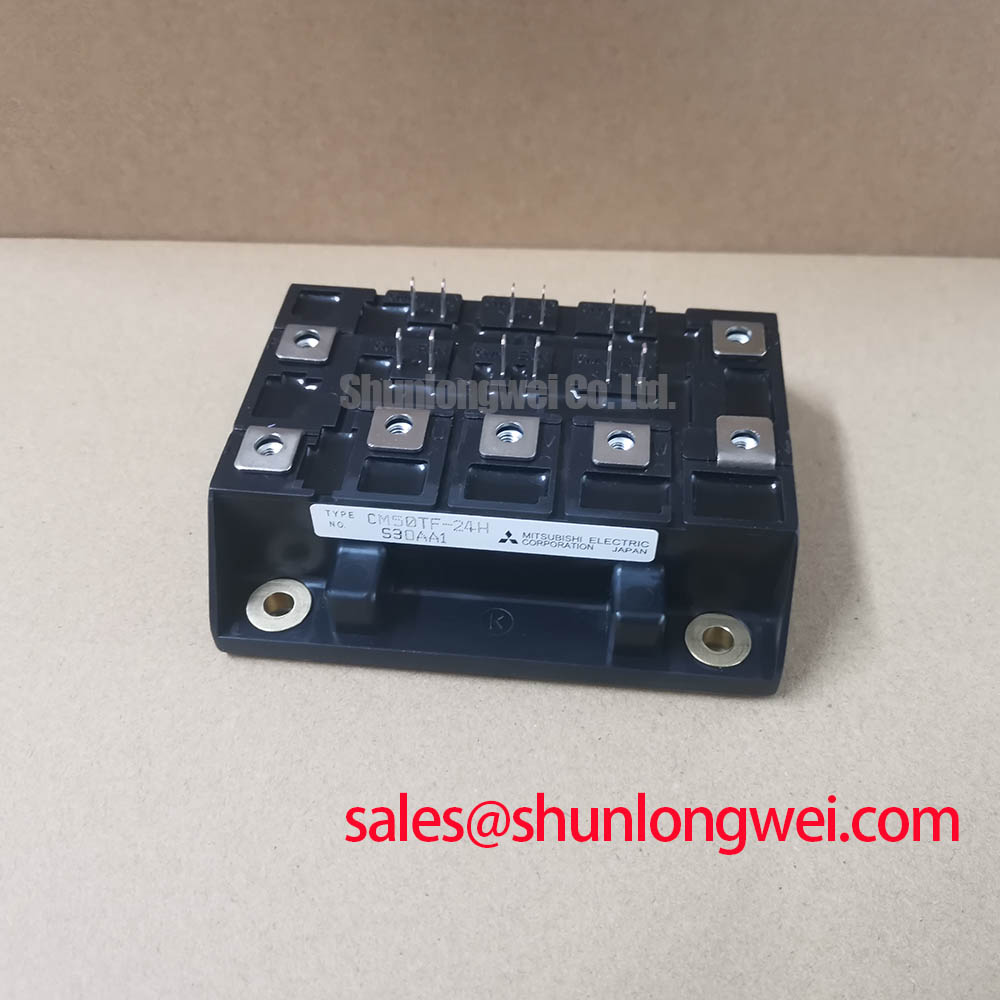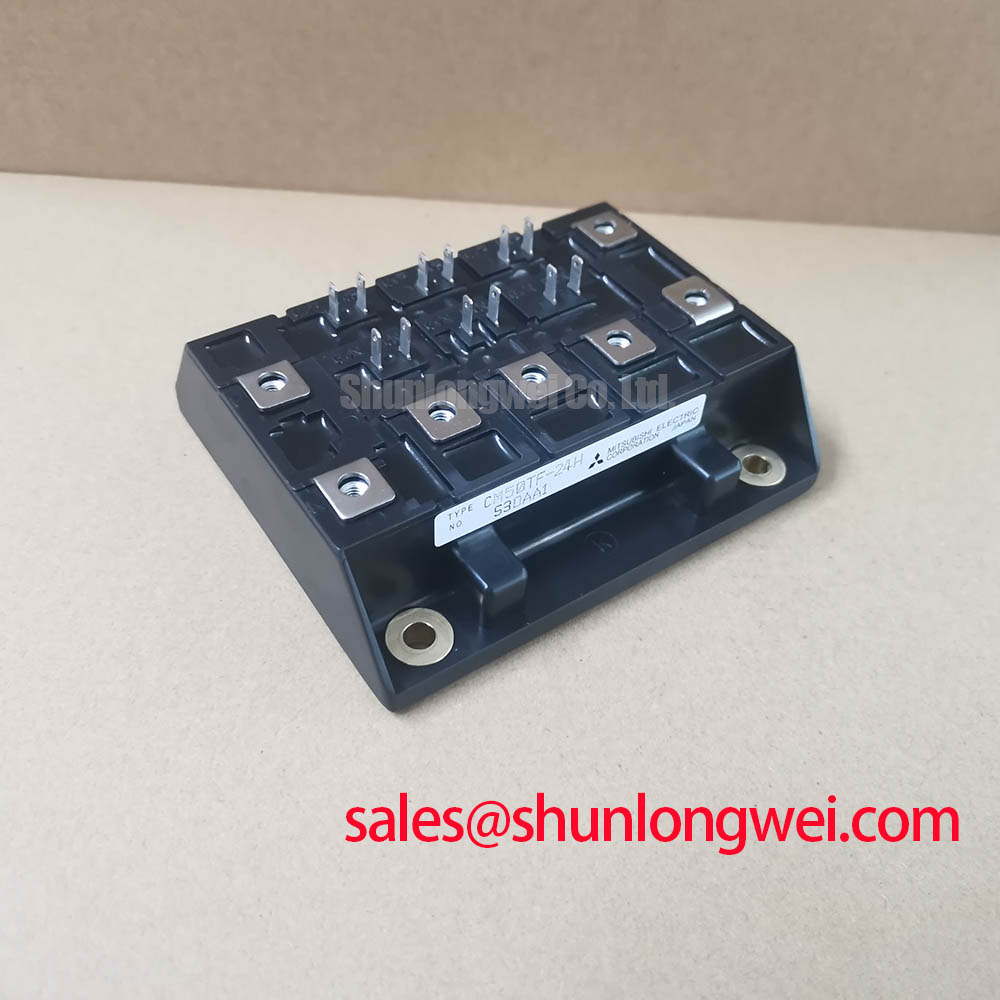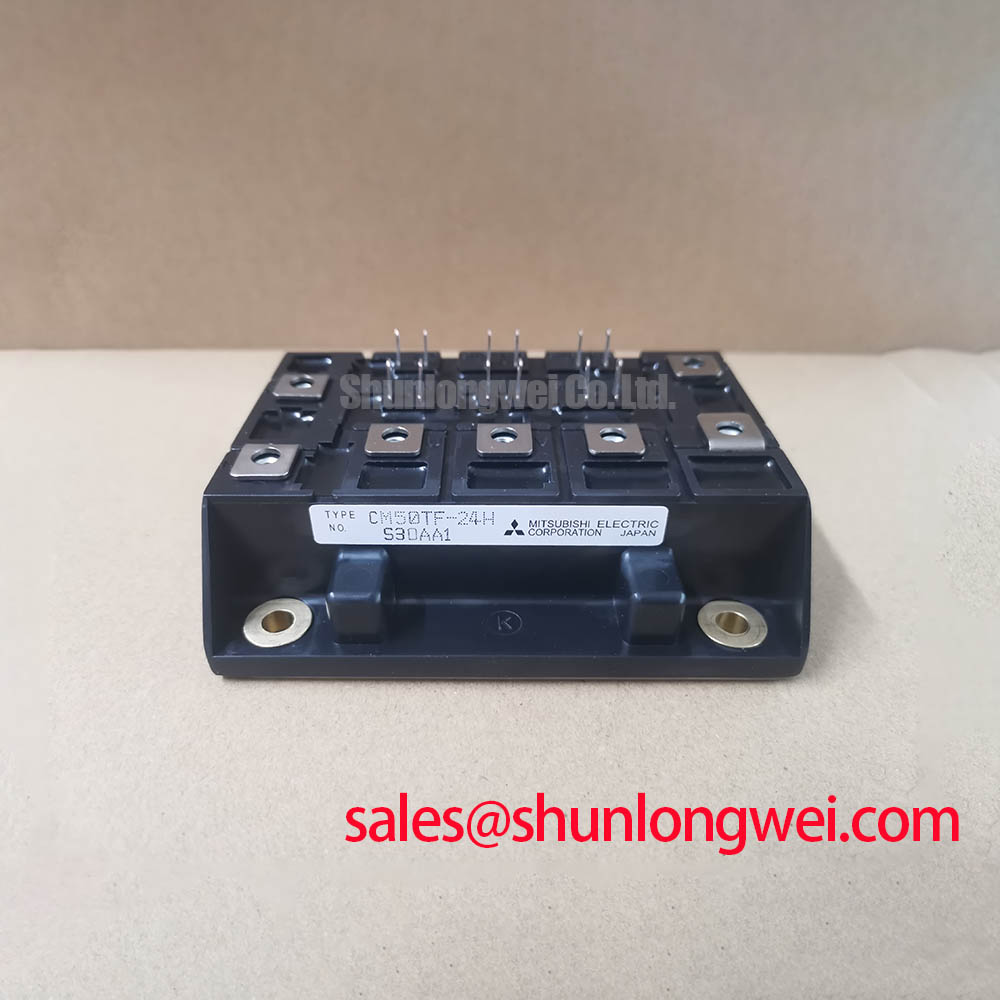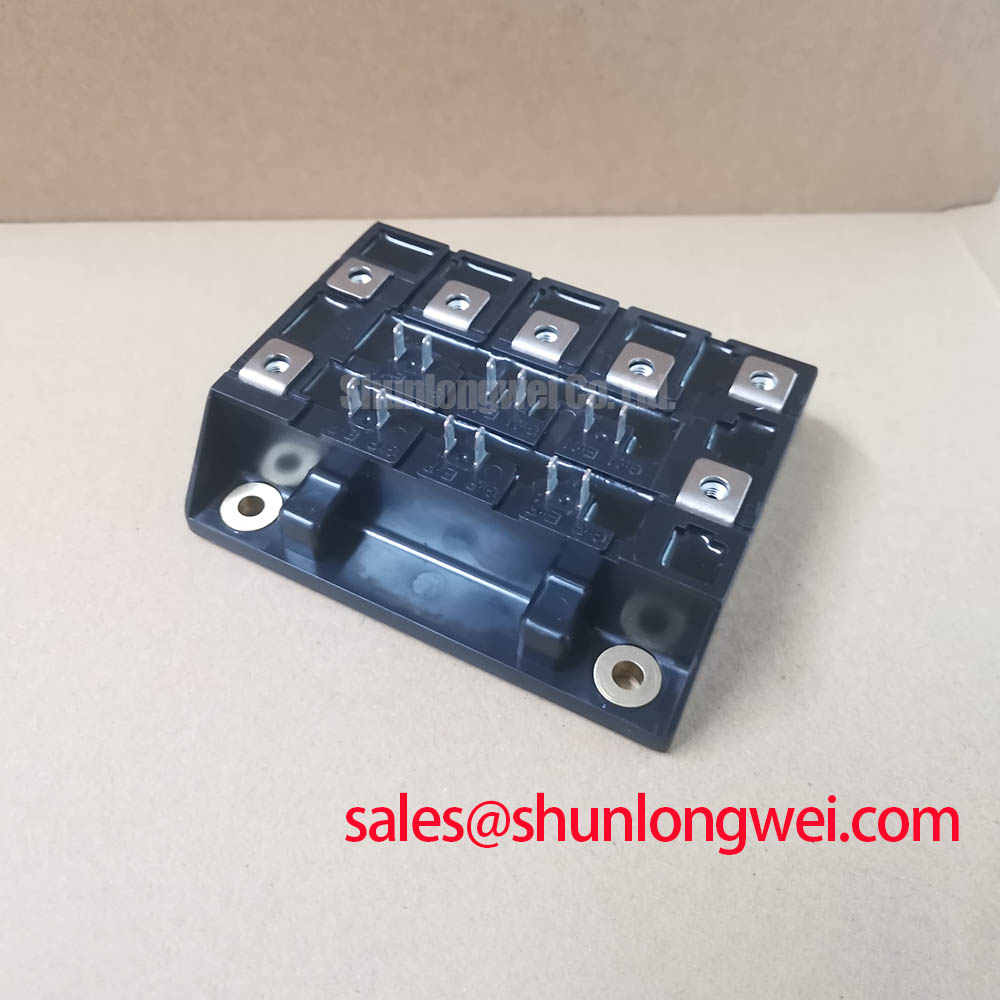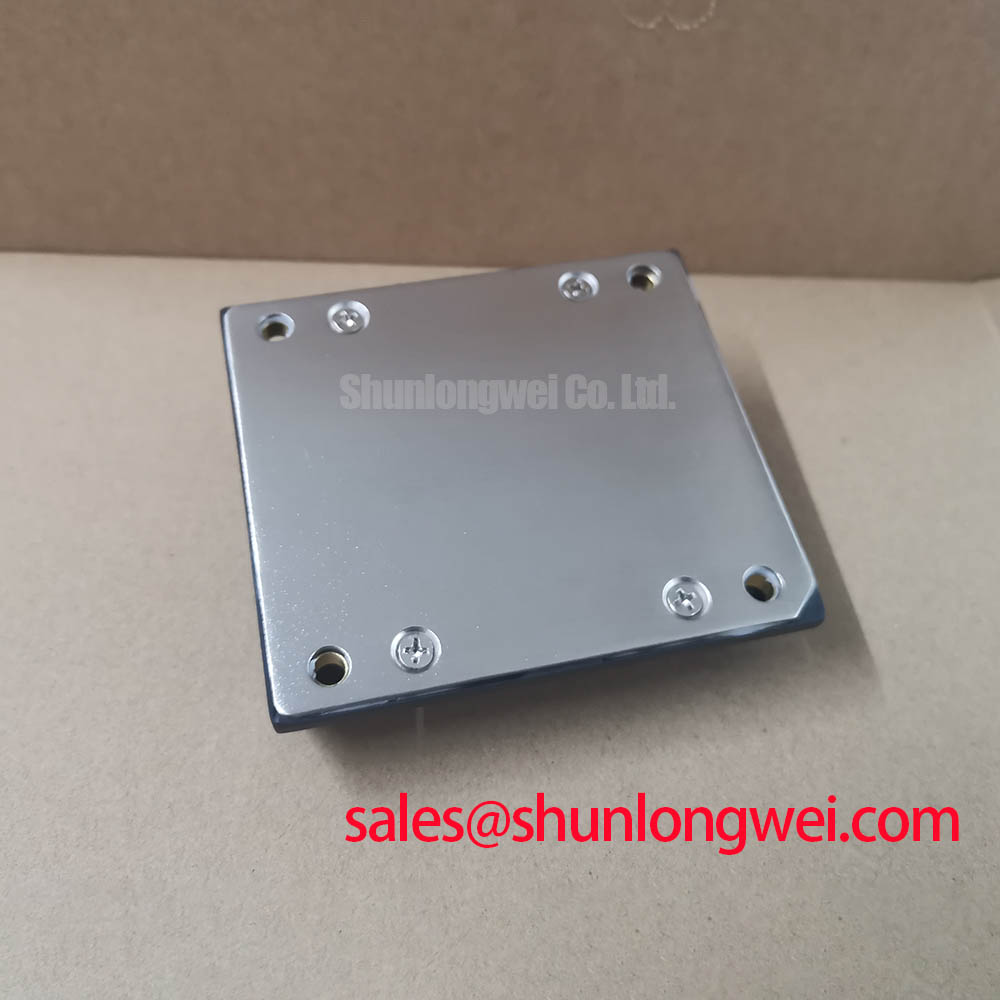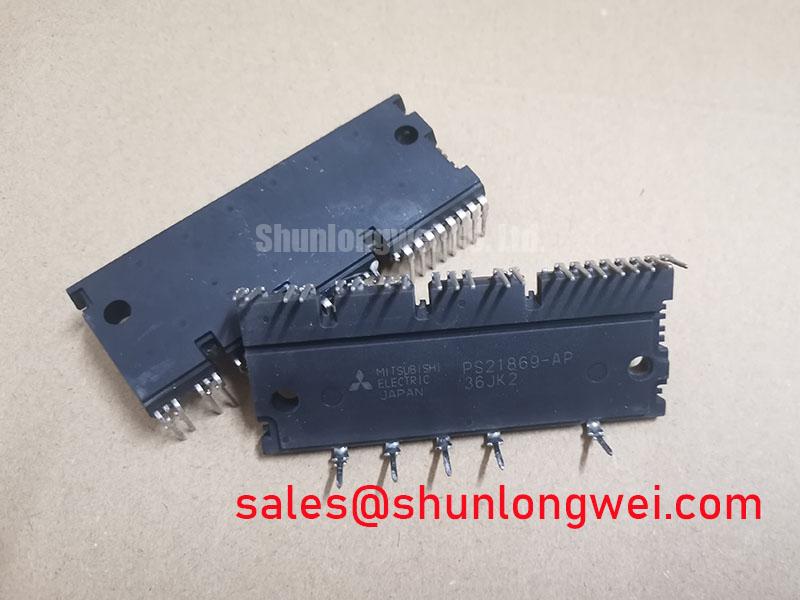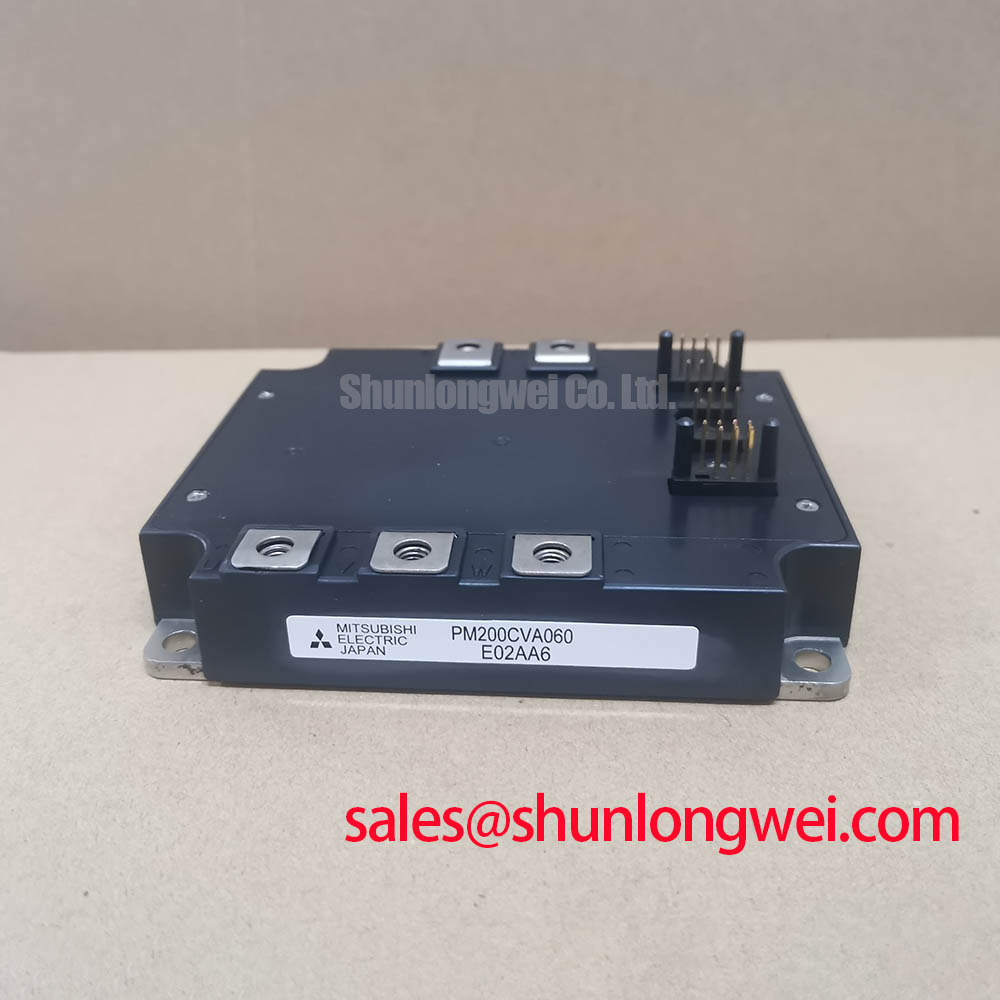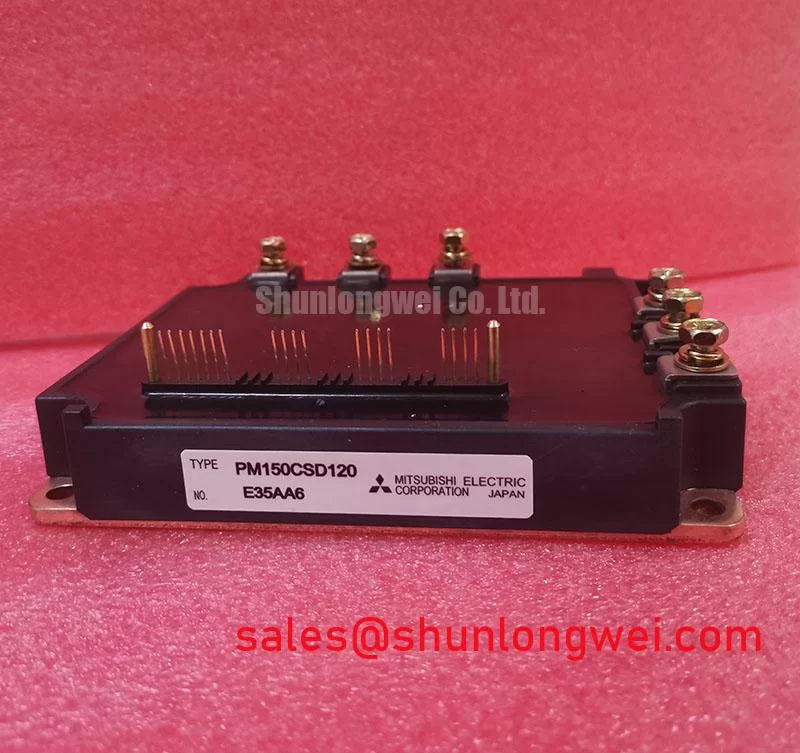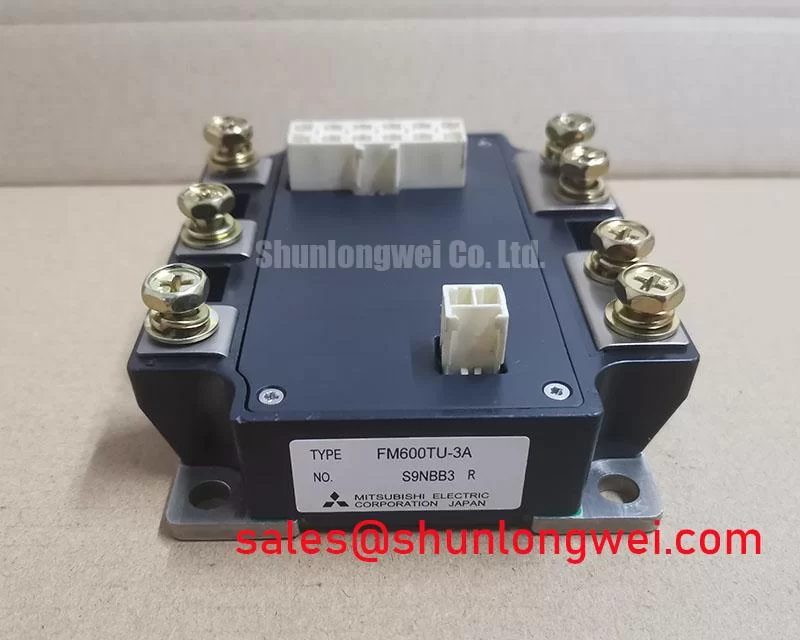CM50TF-24H Technical Review: A 1200V, 50A Dual IGBT for Industrial Drives
Engineering a Foundation for Reliability and Performance
Content last revised on October 5, 2025.
The Mitsubishi CM50TF-24H is a 1200V, 50A dual IGBT module engineered for predictable thermal performance and long-term reliability in industrial power conversion systems. With key specifications of 1200V | 50A | VCE(sat) 2.7V (max), this H-series module delivers two critical engineering benefits: simplified inverter leg design and robust thermal management. Its integrated half-bridge configuration provides a compact and efficient building block for creating three-phase inverters, directly addressing the need for streamlined power stage development. For industrial motor drives up to approximately 15 kW requiring proven reliability over cutting-edge switching speeds, the CM50TF-24H offers a robust and thermally stable power stage foundation.
Key Parameter Overview
Decoding the Specs for Thermal Stability and Safe Operation
The technical specifications of the CM50TF-24H are tailored for reliability in demanding industrial applications. The parameters below highlight the module's capacity for high-voltage operation and its thermal dissipation characteristics, which are central to designing a durable system.
| Parameter | Symbol | Condition | Value |
|---|---|---|---|
| Collector-Emitter Voltage | VCES | VGE = 0V | 1200V |
| Collector Current (DC) | IC | TC = 25°C | 50A |
| Collector Current (Pulse) | ICP | TC = 25°C, 1ms | 100A |
| Collector-Emitter Saturation Voltage | VCE(sat) | IC = 50A, VGE = 15V | 2.7V (Max) |
| Power Dissipation | PC | TC = 25°C, Per Arm | 280W |
| Thermal Resistance (Junction to Case) | Rth(j-c) | Per IGBT | 0.43 °C/W |
| Isolation Voltage | Viso | AC, 1 minute | 2500Vrms |
Download the CM50TF-24H datasheet for detailed specifications and performance curves.
Application Scenarios & Value
System-Level Benefits in General-Purpose Power Conversion
The CM50TF-24H is best suited for applications where operational robustness and design simplicity are primary engineering goals. Its specifications provide a well-balanced solution for a range of medium-power industrial systems.
Consider the design of a Variable Frequency Drive (VFD) for a 7.5 kW (10 HP) induction motor on a 400V AC line. The key challenge is ensuring the drive can withstand industrial grid voltage fluctuations and dissipate heat effectively under varying loads. The CM50TF-24H's 1200V VCES rating offers a substantial safety margin against voltage transients, a common occurrence in industrial environments. More importantly, its defined 0.43 °C/W thermal resistance allows engineers to accurately model and implement a heatsink design that guarantees the IGBT junction temperature remains within safe limits, ensuring long-term reliability without over-engineering the thermal solution.
This module's dual configuration simplifies the layout of an inverter leg, reducing both assembly time and potential points of failure compared to using discrete components. While this module is ideal for this power range, for systems requiring higher power output, the related CM100DY-24H offers double the current handling capacity in a similar voltage class.
Frequently Asked Questions (FAQ)
How does the Rth(j-c) of 0.43 °C/W impact the thermal design process?
This value is a direct measure of how efficiently heat can be transferred from the IGBT chip to the module's case. A lower value is better. This specific rating allows engineers to precisely calculate the required heatsink performance to maintain a safe junction temperature under maximum load, preventing premature failure and ensuring the module operates reliably throughout its intended lifespan.
What is the primary advantage of the dual IGBT (half-bridge) configuration?
The main benefit is design simplification. It integrates two series-connected IGBTs (a high-side and a low-side switch) needed to create one phase of an inverter. This reduces component count, minimizes stray inductance in the power loop, and simplifies the PCB layout and assembly process, leading to a more compact and reliable power stage.
What are the typical gate drive voltage requirements for the CM50TF-24H?
Based on the datasheet characteristics, a standard gate drive voltage of +15V is recommended for turning the IGBT on to achieve the specified low VCE(sat). A negative voltage (e.g., -5V to -10V) is typically used for turn-off to ensure immunity against noise-induced turn-on, a crucial aspect of robust gate driver circuit design.
Is a VCE(sat) of 2.7V (max) considered efficient for modern applications?
While newer IGBT technologies offer lower saturation voltages, a VCE(sat) of 2.7V at its nominal current is a solid, cost-effective specification for general-purpose applications like motor drives and UPS systems where switching frequencies are moderate (typically below 10 kHz). The trade-off is between conduction loss, switching loss, and component cost, and this module represents a balanced, reliable choice for these mainstream applications.
Technical Deep Dive
A Closer Look at Thermal Resistance and Electrical Isolation
Understanding the thermal path is fundamental to power electronics design. The specified Rth(j-c) of 0.43 °C/W for the CM50TF-24H can be thought of like the width of a pipe. Just as a wider pipe allows more water to flow with less resistance, a lower thermal resistance allows more heat to flow away from the silicon chip with a smaller temperature increase. This characteristic is the cornerstone of the module's reliability, as it dictates the efficiency of the entire cooling system.
Furthermore, the module features an electrically isolated baseplate, rated for 2500Vrms. This design element provides a significant system-level advantage. It means the module can be directly mounted onto a common, grounded heatsink without the need for additional, often thermally inefficient, insulating layers like mica or silicone pads. This not only improves the overall thermal transfer but also simplifies the mechanical assembly, reducing costs and potential for insulation breakdown between the module and the heatsink in a high-vibration industrial environment.
A Strategic Component for Industrial Automation
The CM50TF-24H from Mitsubishi represents a strategic choice for designers building the workhorse systems of industrial automation. Its value lies not in pushing the boundaries of a single parameter, but in providing a proven, reliable, and thermally predictable foundation for systems like servo drives, uninterruptible power supplies (UPS), and AC motor controls. In an era focused on system uptime and total cost of ownership, selecting a module with a well-defined and robust thermal architecture is a critical step toward achieving long-term operational success.

